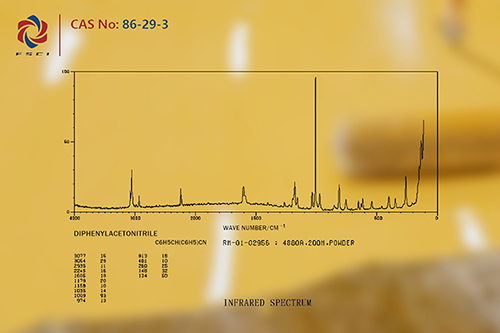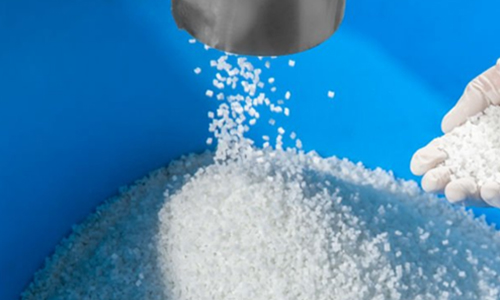Key Role of Diphenylacetonitrile in Polyamide & Epoxy Resins
|
Diphenylacetonitrile (CAS 86-29-3) is an important organic compound that plays a key role in the polyamide and epoxy resin industries. This article will explore the chemical properties, main applications, and importance of diphenylacetonitrile in these two significant industrial fields.
Chemical PropertiesThe diphenylacetonitrile molecule consists of two benzene rings and an acetonitrile group, and its chemical structure is C6H5CH(C6H5)CN. This structure gives diphenylacetonitrile several unique chemical properties, making it valuable in the polymer industry.
The acetonitrile group in the diphenylacetonitrile molecule enables it to participate in various crucial reactions when synthesizing polymers, such as nucleophilic addition and free radical polymerization reactions.
Diphenylacetonitrile has good solubility, allowing it to dissolve and react effectively with other synthetic materials to form stable polymer structures with excellent performance. Polyamide Industry
Polyamide is an essential type of engineering plastic, widely used in automotive parts, electronic products, and industrial equipment. As a key intermediate in the synthesis of polyamide, diphenylacetonitrile plays the following roles:
Diphenylacetonitrile acts as an intermediate in the polymerization reaction during polyamide synthesis, influencing the molecular structure and performance characteristics of the polymer.
By adjusting the amount of diphenylacetonitrile added and the reaction conditions, the physical and mechanical properties, chemical corrosion resistance, and heat resistance of the polyamide can be regulated to meet different industrial application requirements. Epoxy Resin Industry
Epoxy resin is a vital thermosetting resin with excellent bonding strength and chemical stability. It is widely used in coatings, adhesives, and composite materials. The role of diphenylacetonitrile in the epoxy resin industry is mainly reflected in:
As a cross-linking agent, diphenylacetonitrile can react with epoxy resin to form a three-dimensional network structure, improving the heat resistance, mechanical strength, and corrosion resistance of the epoxy resin.
Introducing diphenylacetonitrile as a cross-linker can enhance the chemical stability of epoxy resin, extend its service life, and improve its performance under different environmental conditions. ConclusionBy deeply exploring the key role of diphenylacetonitrile in the polyamide and epoxy resin industries, we can better understand its importance and potential in industrial applications. Contact us
|
 |


 EN
EN
 AR
AR
 BG
BG
 HR
HR
 CS
CS
 DA
DA
 NL
NL
 FI
FI
 FR
FR
 DE
DE
 EL
EL
 HI
HI
 IT
IT
 JA
JA
 KO
KO
 NO
NO
 PL
PL
 PT
PT
 RO
RO
 RU
RU
 ES
ES
 SV
SV
 TL
TL
 IW
IW
 ID
ID
 LV
LV
 LT
LT
 SR
SR
 SK
SK
 VI
VI
 HU
HU
 TH
TH
 TR
TR
 GA
GA
 CY
CY
 KA
KA
 LA
LA
 MN
MN
 KK
KK
 LB
LB





